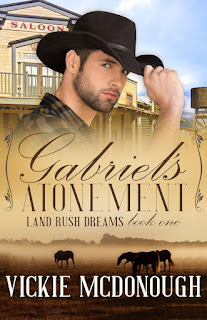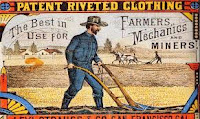CURL UP WITH
A GOOD BOOK THIS WINTER!
THE LADY’S MISSION
The Quilting
Circle (Book 5)
A Sweet
Historical Romance Series
By Mary Davis
Will Cordelia
abandon her calling for love? Cordelia wants to escape the social norms for her
society station. Unless she can maneuver her father into relinquishing her
trust fund, she might have to concede defeat—as well as her freedom—and marry.
Every time Lamar finds a fascinating lady, her heart belongs to another. When a
vapid socialite is presented as a prospective bride, he contemplates flying off
in his hot air balloon instead. Is Lamar the one to finally break the
determination of Cordelia’s parents to marry her off? Or will this charming
bachelor fly away with her heart?
BRIDE BY BLACKMAIL
By Debbie
Lynne Costello
A broken
heart, controlling father, and intrusive Scot leave Charlotte reeling. Accused
of stealing an heirloom pin, she must choose between an unwanted marriage and
the ruin of her family name. With her and her sister’s futures at stake,
Charlotte must navigate through injustice to find forgiveness and true happiness.
Eager to find the traitor who caused the death of his brother, Duncan comes to
America attempting to fit into Charleston society. But when the headstrong
Charlotte catches his eye, Duncan acquires a second mission—winning the lass's
hand. After several spurnings, he uses unconventional ways of winning her
heart.

THE CRYPTOGRAPHER’S
DILEMMA
By Johnnie
Alexander
A
Cryptographer Uncovers a Japanese Spy Ring
FBI
cryptographer Eloise Marshall is grieving the death of her brother, who died
during the attack on Pearl Harbor, when she is assigned to investigate a
seemingly innocent letter about dolls. Agent Phillip Clayton is ready to enlist
and head oversees when asked to work one more FBI job. A case of coded defense
coordinates related to dolls should be easy, but not so when the Japanese
Consulate gets involved, hearts get entangled, and Phillip goes missing. Can
Eloise risk loving and losing again?

DIAL V FOR VALENTINE
By Linda
Shenton Matchett
Valentine’s
Day is perfect for a wedding. If only the bride will agree. Celeste
Hardwicke has just opened her law practice when she finally accepts Fergus
Rafferty’s marriage proposal. Not to worry. She has plenty of time to set a
date, then plan the wedding. Until she doesn’t. But a quickie wedding isn’t
what she has in mind. Besides, why get married when the groom will ship out
after the ceremony? When she stumbles on her great-grandmother’s diary from
World War II, she discovers the two of them share the same predicament.

TITANIC: LEGACY OF
BETRAYAL
A Time-Slip
Novel
By Kathleen
E. Kovach, et al.
A secret. A
key. Much was buried on the Titanic, but now it's time for resurrection. Follow
two intertwining stories a century apart. 1912 - Matriarch Olive Stanford
protects a secret after boarding the Titanic that must go to her grave. 2012 -
Portland real estate agent Ember Keaton-Jones receives the key that will unlock
the mystery of her past... and her distrusting heart. Review: “I told my wife
to move this book to the top of her reading list... This titanic story is more
interesting than the one told in the Titanic movie... She will absolutely love
it.”

HUNT FOR A HOMETOWN
KILLER
By Mary Dodge
Allen
2022
Christian Indie Award Winner, First Place – Mystery Suspense
2022 Angel
Award Winner – Mystery Suspense
While Roxy
Silva is working her hometown mail route, a sinkhole opens up and uncovers the
car used in her husband’s murder. Determined to solve the cold hit and run case,
Roxy turns amateur sleuth, using her amazing photographic memory. Her
relationship with handsome detective Kyle grows close as they uncover shocking
secrets. When the killer takes Roxy captive, she must use her wits to survive.

LILLY’S PROMISE
By Terrie
Todd
From an
Amazon Review: Todd’s engaging dual timeline novel “Lilly’s Promise” explores
the connections between family past and present. I was as eager as Diana, the
main character, to learn the story of her father’s mother Lilly as he revealed
more and more of the story. The power of redemption and God’s love are woven
throughout Lilly’s past and Diana’s present and future. “Lilly’s Promise” is
perfect for readers who enjoy historical fiction that incorporates a Christian
message. Also, the story provides the opportunity to learn more about Canada and
Canadian holidays.

RACHAEL'S DECISION
By Molly
Jebber
Rachael has
suffered an injury and tragedy in her young life, but she's happy working with
her friends in the Amish bakery. She's smitten with Caleb, but he wants
children. She's barren. He says it doesn't matter. She's afraid he'll have
regrets. Widower, Nathan, offers her a marriage of convenience, and she's close
to his children. Other obstacles blindside her, and make her life-altering
decisions difficult. What does the future hold for Rachael?

SARAH’S SURRENDER
By Vickie
McDonough
Sarah Worley
rejects Luke McNeil’s marriage proposal to pursue property in the Oklahoma
Territory land lottery in 1901, but the ranch hand follows her. The lottery
could enable Sarah to finally have a home of her own, but with it comes
challenges she never considered. When her dream becomes a nightmare, she must decide
whether to stay on her land or give up and return to the life she left. Luke
hopes to win a claim and give Sarah the home she’s always wanted. Can he prove
his love and show the stubborn woman he’s the right man for her?

COUNT THE NIGHTS BY
STARS
By Michelle
Shocklee
1961. After
a longtime resident at Nashville’s Maxwell House Hotel suffers a stroke, Audrey
is tasked with cleaning out the reclusive woman’s room. She discovers an
elaborate scrapbook filled with memorabilia from the Tennessee Centennial
Exposition. Love notes on the backs of unmailed postcards inside capture
Audrey’s imagination with hints of a forbidden romance . . . and troubling
revelations about the disappearance of young women at the exposition. Audrey
enlists the help of a handsome hotel guest as she tracks down clues and
information about the mysterious “Peaches” and her regrets over one fateful
day, nearly sixty-five years earlier.

BETHEL
Runaway
Brides of The West
By Kimberly
Grist
A semi-retired bootlegger and a
beleaguered sheriff- because no good story ever started with cookies and milk. She’s shaking off the dust of her
well-worn boots, not looking back and hoping for a transformation. Daughter of
a traveling merchant, Bethel is tired of peddling her Daddy’s “Special Sauce”
and being run out of town by every sheriff east of the Mississippi. So it’s
time to head west. She just needs to sell a few more bottles to help fund her
trip. If only she could shake off that irritating detective waiting at the
stage stop.

MONTANA GOLD
By Janalyn
Voigt
Hills of Nevermore (book 1) - Can a young widow
hide her secret shame from the Irish preacher bent on protecting her?
Cheyenne
Sunrise (book 2) – After her wagon journey goes terribly wrong, a woman
disillusioned in men must rely on a half-Cheyenne trail guide.
Stagecoach
to Liberty (book 3) – A young Hessian girl must decide to trust a
handsome Irish stranger or remain with her alarming companions.
The
Forever Sky (book 4) - Can a young widow with no faith in love
hope for a future with the man who broke her heart?
The
Promise Tree (book 5) - A preacher’s daughter shouldn’t encourage a
troublemaker’s advances—no matter what her wayward heart desires.

WILTED DANDELIONS
By Catherine
Ulrich Brakefield
Spinster
Rachael Rothburn is eager to leave her life of luxury in Boston to share the
gospel with Native Americans in the west. The only problem is the missionary
alliance won’t let her go unless she’s married. When Dr. Jonathan Wheaton
learns about the restrictions, he offers Rachael a marriage of convenience. The
pair sets off for Oregon to share Jesus with the natives, but in the process,
they discover God doesn’t create coincidences—He designs possibilities. “…one
gripping, compelling read. Wilted Dandelions… had me eagerly turning pages and
sighing over the love story premise as well as taking comfort in the spiritual
message…” ES







































